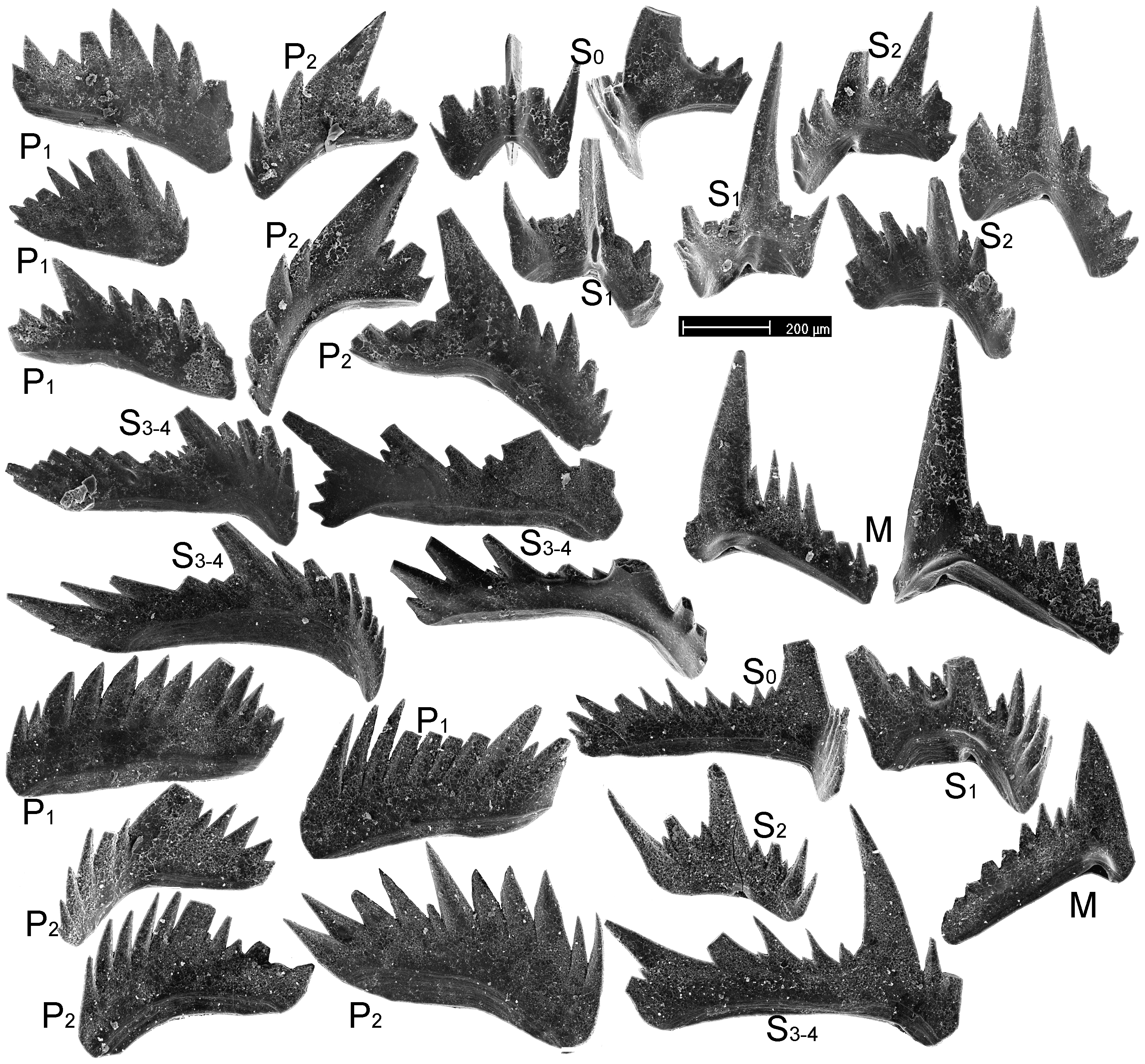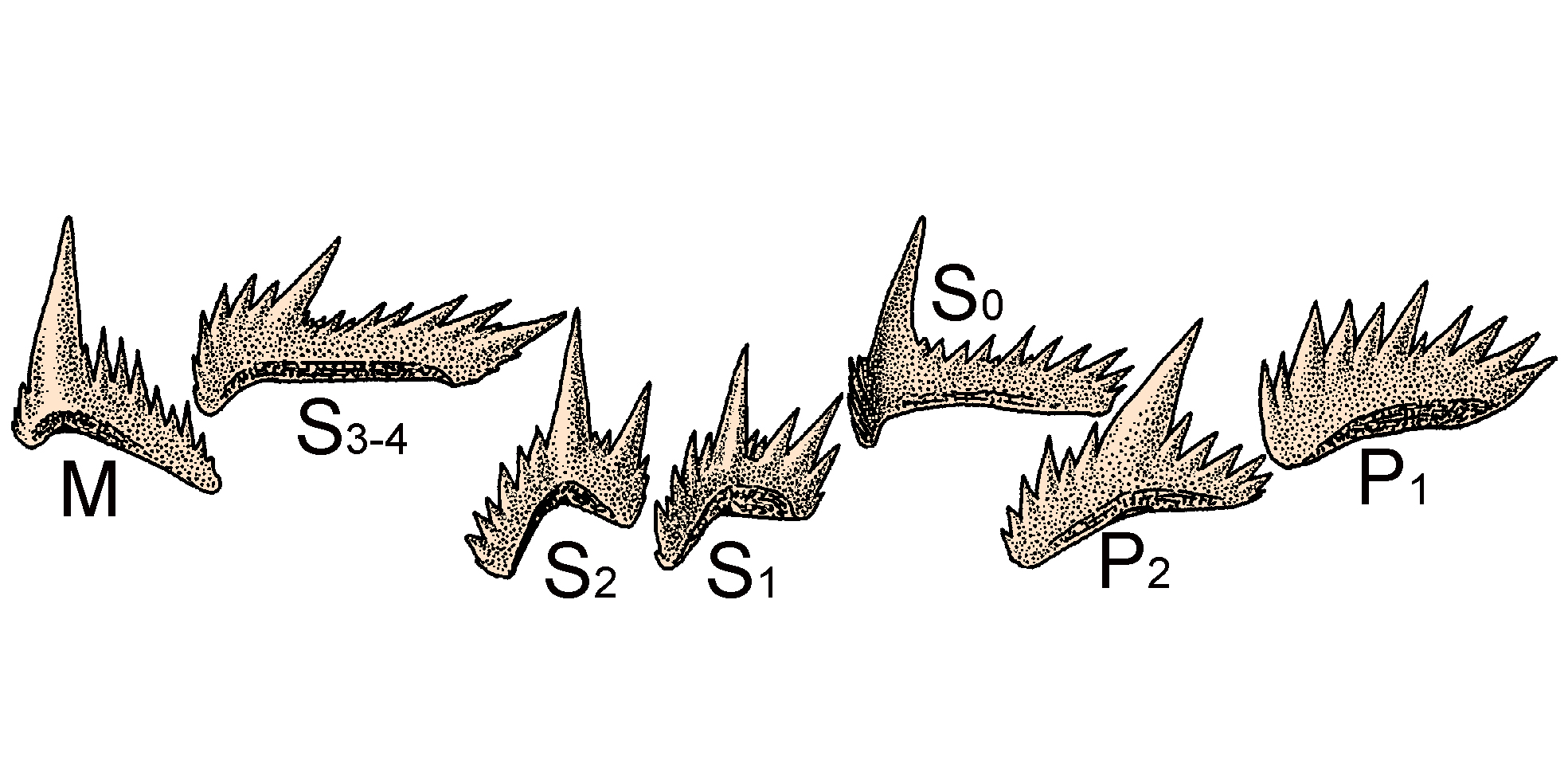Diagnoza
M elements with relatively short and transversely arranged inner process; cusp of P1 element only slightly longer than other denticles. Porównanie
This is the geologically oldest species of the genus. Its unusual variability and small size suggests a paedomorphic origin and release of selection pressure on the apparatus morphology. Possibly the associated Mehlina kielcensis sp. n. is close to its ancestor, as suggested by similar M and P1 elements but other elements of the apparatus are non-paedomorphic. Alternative to this ancestry is the relationship to Pandorinellina? vogelgnathoides but this would require a cryptic occurrence of the latter lineage during the K. triangularis Zone. As generally the francodinids show punctuated distribution, this is not unlikely. In late populations of the species most M elements show a rounded tip of the external process, which is typical for its successor, V. proclinatus. Autekologia Występowanie geograficzne
Płucki and Jabłonna. Zasięg czasowy
The K. triangularis Zone Materiały muzealne
ZPAL: 748 specimens. Literatura
Dzik, J. 2006. The Famennian "Golden Age" of conodonts and ammonoids in the Polish part of the Variscan sea. Palaeontologia Polonica 63, 1-359. | 

